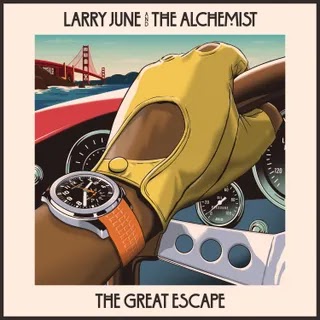The fourth album in Nas’ ongoing series of collaborations with producer Hit-Boy locks into a straightforward groove. It’s loose and expert and finally nimble again.
For the first 20 years of his career, each Nas album was not only a major event, but a departure from or escalation of what came before. This changed in 2020, when he locked into a steady rhythm with Hit-Boy, the producer from Southern California’s Inland Empire who seemed, at the beginning of the 2010s, like he might shape the decade in rap (he produced JAY-Z and Kanye West’s “Niggas in Paris,” A$AP Rocky’s “Goldie,” and Kendrick Lamar’s “Backseat Freestyle” in a little over a calendar year), only to retreat into the quasi-anonymity of expensive pop projects. Since then, he and Nas have been on an unwavering schedule, arriving once a year to drop music that has to this point hovered just above “competent,” a master artist with a workmanlike producer doing earnest work for hire. Their most recent installment, somewhat ironically, was called Magic.
King’s Disease III, which is almost twice as long as Magic, is the first argument in favor of this deliberate demystification. Nas’ chief concerns (Queensbridge circa 1988, the corrosive effects of violence, upward social mobility for Black Americans, and banal luxury) are the kind that come into sharper focus with each variation on minor variation. And a rush of new albums frees each from the albatross of his legacy, which he no longer feels the need to litigate to the lengths he once did. KD3 is steeped in nostalgia but not besotted with it; it is routine, and all the better for it, loose and expert and finally nimble again.
With this newfound looseness comes a more direct mode of writing and delivery. Nas verses were once like cobwebs, seeming to stretch in every direction at once, phonetically and topically, until isolating the individual threads became impossible—and beside the point. Songs like 2001’s “Rewind,” where a pulp crime vignette, including its lines of dialogue, is told in reverse, are actually easier to digest on first pass than many of the denser, knottier ones from his first several albums. As late as 2012’s “Nasty,” he was staking his albums on ostentatious displays of raw technique. Here he seems to stride atop Hit-Boy’s beats where he once would have scurried back and forth through a network of tunnels he’d dug beneath them. On “WTF SMH,” he makes nearly every point—about Big Daddy Kane’s influence and how profitable his publishing has been for MC Serch, about “cowards” who “cut the tough guy shit”—land with percussive single-syllable bursts.
The enemy, as is always the case with Hit-Boy and often with Nas, is the middle. KD3’s most effective songs are the ones pulled toward opposite poles: “Thun” recalls the mournful songs, produced by DJ Premier et al., that imagined mid-1990s New York City to be rife with well-dressed mobsters and poorly maintained project stairwells, while “Once a Man, Twice a Child” is its languid, luxuriating counterpoint. When Nas describes himself, on the lush, Marcus Miller-sampling “Hood2Hood” as a mixture of “Paisley Park Prince with Supreme Team Prince,” he’s finally landed on the elusive elevator pitch that resolves his most seemingly irresolvable contradictions.
The paring down of Nas’ verses necessarily makes them feel less improvisatory; he has always been such an exacting writer that little seems to be discovered in the recitation of lyrics themselves, but density brings more opportunity for little bends in inflection and hitches in rhythm. The drabbest moments on KD3 come when he lapses into mechanical entrepreneur-speak (“For those who claim a hundred million on taxes…”) doled out with a deliberate hand and no room for flourishes that might undercut or deepen its meaning. Fortunately these are far rarer than on the first two King’s Disease volumes—and they’re balanced by more charming references, as when Nas notes, on “Get Light,” the “grown ladies with Mercedes-Benz keys” who are “friendly as little kids on 10-speeds.”
While one could point to his singing hooks as far back as 1996’s “Street Dreams”—or to the huskier, 2Pac-indebted vocals he dabbled in beginning around the turn of the century—Nas is dogged by a reputation as a rapper who is not particularly musical. This critique obscures how well he has modulated his voice to inhabit different characters, emotions, and mindsets in his songs. The four Hit-Boy records, this one included, tend to flatten out this dimension of his work, being rapped largely from a place of evident comfort. So when Nas interrupts “Don’t Shoot,” the final song of the album proper, with his exhausted, pleading rasp of a hook, he injects the lyrics with the stakes he clearly feels they deserve. “Don’t shoot, gangsta, don’t shoot,” he exhorts as if he’d sprinted into the recording booth and is only now trying to collect himself. “You are him, and he is you.”
















0 comments:
Post a Comment